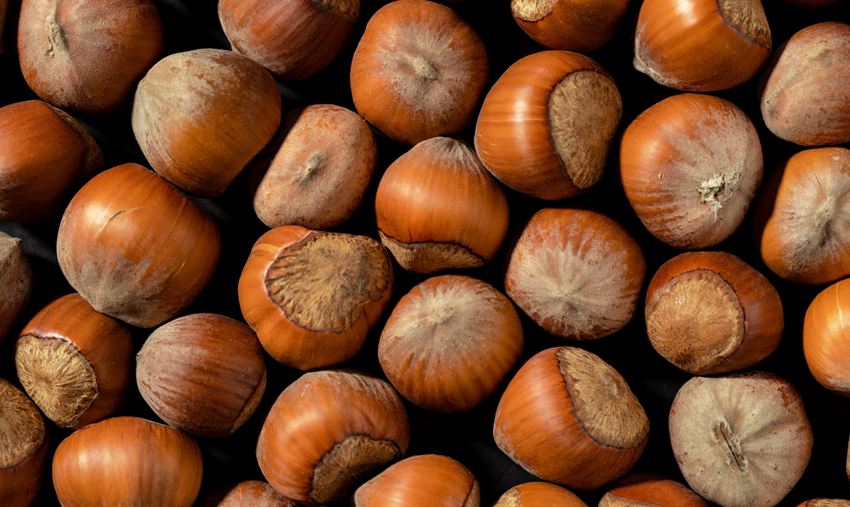The Rise and Fall of the Roasting Chestnut
The Nat-King-Cold hard facts

“Chestnuts roasting on an open fire…” If you’ve been alive in America at any point since 1946, the odds are good that you’ve crooned this line in some December or another. The roasting of chestnuts is sort-of synonymous with yuletide vibes… even though you’ve probably actually never done it.
In years past, you might have tasted the sweet flesh of a roasted (or boiled or stewed) chestnut straight out of the shell, or stuffed into a holiday turkey. But nowadays they’re hard to find – and if you ever do spot a supermarket cache of shiny brown chestnuts, they are often stale and/or sold at exorbitant prices. Up until 100 years ago, chestnuts were a common staple food for many Americans – heck, the expression “old chestnut” existed long before that – and it was a tradition to eat them during the holidays.
Before we figure out why that’s so, of course, a primer on why it was.
Ancient origins
The coiners of “old chestnut” might not have known the half of it; they’ve been well-known at least as long as Western civilization was a thing. Many wise ancient Greeks—Homer, Hippocrates, Theophrastus (the father of botany), and Dioscurides (the father of pharmacology)—wrote about chestnuts. And like everything else they “borrowed” from the Greeks, the Romans “discovered” chestnuts and propagated them, founding a veritable chestnut empire throughout Europe.
The appeal was clear: Raw chestnuts are crunchy and slightly bitter, but roasted ones are soft, buttery, and slightly sweet. The chestnut has been called the “bread tree” for just how much it’s been a staple in the diet of many for thousands of years. The trees were also prized for their lumber—chestnut wood is hard, strong, and very rot-resistant.
By the time the Roman Empire fell, chestnuts were well ingrained into European culture, and nowhere more so than Italy. Today, thick chestnut forests grow in the Italian mountains. When they’re in season, from October to December, you can buy chestnuts just about anywhere—from markets, shops, and street-corner vendors. It remains one of the top chestnut-exporting countries followed by China, Portugal, Turkey, and Spain.
American classic
Meanwhile, on the other side of the Atlantic, Chestnut trees have been in North America for at least 10,000 years, since the end of the Pleistocene Ice Age. As the glaciers receded and forests popped up, chestnut trees became the most dominant species, growing as far north as Maine, south to the Gulf Coast, and west to the Great Lakes.
In the Appalachians, where forests were bathed in cool, moist conditions, chestnuts were practically a monoculture, growing up to 100 feet tall and 12 inches in diameter. Much of the local Appalachian wildlife—bear, deer, squirrels, turkeys—depended on chestnuts as their primary food source. The people who lived there depended on the trees as well, as chestnut trees were an important part of the mountain economy (well, that and moonshine).
Having a grove of chestnut trees meant being able to trade nuts for goods, selling them on to feed the growing urban populations. Their sheer abundance – especially in the late fall – gave rise to the tradition of eating chestnuts at Thanksgiving and at Christmas.
So, what actually happened?
The Chestnut Blight of 1904 was one of America’s worst ecological disasters.
It goes like this: The fungus Chyphonectria parasitica – part of an order of sac fungi that wreck all kinds of crops – hitched a ride on closely-related Asian chestnut trees. First recorded in 1904 at the New York Zoological Gardens, the fungus spent the next two decades tearing across the continent, killing off virtually every chestnut tree in the U.S. and Canada—some four billion in total—and leading to a severe economic impact on food and wood supplies.
After the blight, chestnuts necessarily became more of a holiday novelty, a nostalgic nod to times when chestnuts were aplenty… you know, much like “The Christmas Song” itself. But there’s a movement to bring them back into the American mainstream food supply. Native chestnut trees can’t survive anymore – the fungus, if you will, is still among us – but blight-resistant hybrid trees are being planted more-or-less as we speak. We’ll see!
In the meantime, enjoy your chestnuts this holiday season, if you can get ‘em. And if you can’t, you can raise a glass of eggnog to the memory of the American chestnut, to the tune of Nat King Cole’s sweet, perfect-pitch baritone voice.
